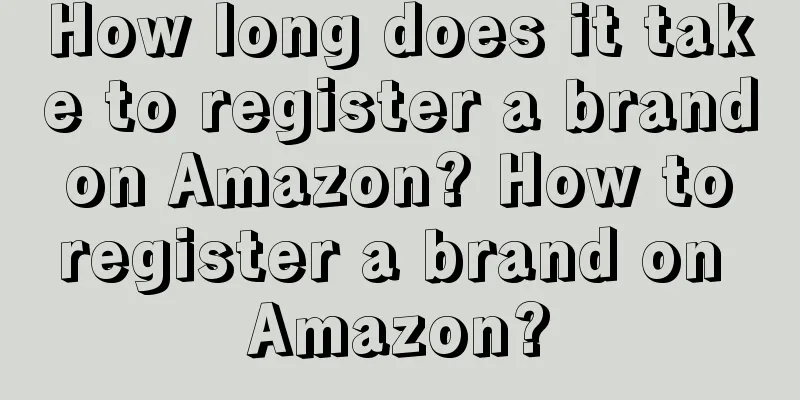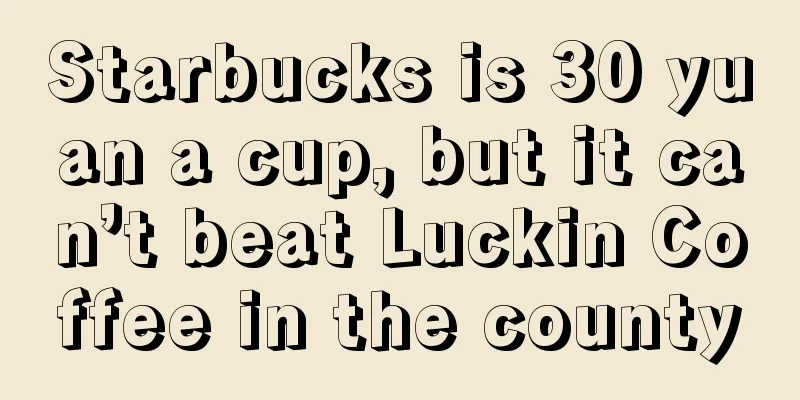First-hand data to interpret new business opportunities in the sinking consumer market

Since the end of last year, Pinduoduo's performance has been growing rapidly. Although I haven't heard of a few brands making a lot of money from Pinduoduo, I have seen many investors make a fortune from Pinduoduo stocks - for example, Xu Xin, a well-known consumer investor, made a net profit of 1 billion in just three months. In her early years, Xu Xin missed the opportunity to invest in Pinduoduo in the primary market, and thus reflected on herself that "I don't quite understand how low-tier people live." Therefore, she personally led her team to live in the county to experience life, and conducted in-depth consumer research, thus understanding that there are only 300 million real middle-class people in China, and the remaining 1 billion have no money to upgrade consumption. As a result, at the end of 2023, Xu Xin invested heavily in Pinduoduo stocks, with a return rate of nearly 80%. This may sound like a piece of gossip, but the signal behind it cannot be ignored: there is still a lot of room for growth in the lower-tier consumer market in the future . When new consumption emerged a few years ago, everyone was obsessed with upgrading high-end consumption, but in fact, the market leaders had already smelled the opportunity. For example, Mondelez International (Oreo's parent company) implemented the go deep strategy to vigorously expand the county channels; Black Ant Capital spent half a year conducting in-depth research in counties and publicly released the "Research on the Consumption Demand Trends of Young and Middle-aged People in the County Market"; ByteDance, Tencent, and Alibaba have launched industrial belt support plans to help the development of "white-label to brand". Recent experiences have also given us a deep understanding of the rise of the sinking market:
So, for current consumer brands, how to understand the logic of the sinking market and seize business opportunities? In order to explore this issue, we invited Zhang Jing (Jessie), head of alternative data at Jiuqian Middle Platform, to a recent live broadcast event to gain insights into the development trends of the sinking market from big data in multiple dimensions. Jiuqian is an old friend of Growth Black Box - thanks to more than ten years of experience in commercial due diligence, Jiuqian has accumulated a large amount of first-hand consumer market data and established a separate database product "Jiuqian Middle Platform". Jessie also prepared a full 100 pages of PPT with the team this time and spoke for three and a half hours. Based on the live broadcast content, this article systematically sorts out the data insights about the sinking market, including e-commerce data, retail store data, consumer behavior data, and detailed analysis of brand cases in the four major tracks of skin care, outdoor clothing, coffee, and fast food. 1. How to understand the opportunities in the sinking market?Generally speaking, the sinking market refers to the market in third-tier and lower-tier cities, counties, towns and rural areas. Its consumption potential is mainly reflected in three aspects:
Although the wallets in the sinking market are large enough, the key is that people have to be willing to consume in order to turn it into a driving force for corporate growth. The current trend has two levels: The first is the improvement of infrastructure. The popularity of mobile phones and short videos has broken the information gap between high-tier cities and low-tier cities, and popular things will be quickly transmitted to the sinking market; at the same time, the rapid development of e-commerce platforms has catalyzed the release of consumption capacity. The second is the return of population. According to the data from Jiuqian’s survey, after the epidemic, the population of first-tier cities continued to flow out, while the overall population of third-tier cities was inflow. This means that some people choose to return to their hometowns. These people will bring the lifestyle of big cities to small counties, influence the people around them, and then promote the consistency of living habits in high- and low-tier cities, further stimulating consumption diversification. Therefore, the current sinking market can be described as "fast growth + high ceiling" . Taking the physical industry as an example, we can clearly see that there are more new stores opened in sinking areas and faster sales growth in shopping malls. On the other hand, since the penetration rate of physical formats in lower-tier cities is still somewhat lower than that in higher-tier cities, there is still a lot of room for growth - for example, there are 3 Chinese snack shops per 10,000 people in lower-tier areas, but this is twice as high in first- and second-tier cities. 2. How to do business in the sinking market?"Consumer-centric" is an unchanging truth. Therefore, if you want to find growth in the sinking market, you must first understand the behavioral characteristics of these consumers and understand how their habits are different from those of residents in first- and second-tier cities. Simply put, small cities are societies dominated by blood and geographical relationships , and the entire system is relatively closed; large cities are dominated by industry relationships - the so-called industry relationships are relationships centered on the interests of "me". In a society dominated by such relationships, people are more alienated from each other and switch between them more quickly. The differences in group relationship characteristics lead to the following differences between consumers in high-tier and low-tier cities:
Since we are facing different groups, we need to use different ideas and methods to do business. Let’s look at it from the perspective of “selling goods”: According to the consumer research conducted by Jiuqian Middle Office, middle-class individuals and middle-class families prefer official flagship stores and offline brand stores in terms of purchasing channels; salaried families prefer offline collection stores and cost-effective e-commerce; salaried individuals prefer offline supermarkets, comprehensive e-commerce and cost-effective e-commerce. Consumers’ emphasis on brands is decreasing with income levels and city and county levels. Consumers in the lower-tier markets prefer cost-effective channels, value full product categories and low prices, and do not pay much attention to brands. From the perspective of "opening a store": Compared with high-tier cities, the average life cycle of sinking stores is longer, and there is not much difference between chain and non-chain stores. In fact, sinking markets often do not care whether a store is a well-known brand in the country, but whether it is a large platform in the local area. Due to the above characteristics of the sinking market, when a brand sinks, it needs to think about how to deal with the competition with local single stores, which usually have been operating locally and accumulated personal connections for many years. At present, more and more chain brands are looking for growth in the sinking market, and many friends are also very concerned about the survival of chain franchise stores in small cities. It can be seen that the business districts in sinking cities are small in area and few in number, which means that good locations are very limited. Behind good locations are actually good franchisees, because good franchisees control good business district locations. The so-called "market rewards first movers" actually refers to competing for people rather than competing for locations. Currently, super franchisees on the market are looking for more profitable businesses and are not limited to a certain category. The gold standard for testing whether a franchise brand is a good brand is whether it can allow franchisees to make money continuously. Continuously making money means being able to continue to operate the brand at that point. 3. Four major tracks and eight brands are pioneers in exploring the sinking marketIn this article, we will analyze the market performance of four sectors , namely beauty and skin care, outdoor clothing, coffee, and fast food. At the same time, we will select and analyze eight typical brand cases to reveal how their strategies respond to market trends. 1. The beauty and skincare market is recovering, and affordable brands are disrupting the marketThe beauty and skin care business usually has four characteristics:
In the first quarter of 2024, the year-on-year growth rate of online skincare products was higher than the overall growth rate of the beauty industry, with facial care contributing 85% of sales - and sets and serums accounting for the bulk of sales. There are actually two types of consumers behind this: sets are more attractive to entry-level users, while those who pursue extreme efficacy prefer to choose single product essences, trying to choose the best products in different links to combine them for the greatest efficacy. For penetrating a larger scale of sinking markets, set combinations are obviously more suitable. On different e-commerce platforms, there are significant differences in the competitive situation and market structure between domestic and overseas brands.
Therefore, Douyin has a large market, a fast growth rate, and a faster iteration of its brand structure, making it the main incremental pool for affordable domestic brands and the main battlefield for the sinking market. Finally, the current sinking market mainly competes in the middle and low price ranges, and the pattern is more fragmented and changes faster. Since last year, the brand market share pattern in the high-end market has hardly changed, and there have been few adjustments in the mid-range market; while the affordable market has undergone disruptive changes. Case analysis 1: Hanshu Hansu seemed to have suddenly exploded within a year, ranking first on Douyin with a score of 4 billion. However, looking back at Hansu’s 20-year development path, we will find that it is actually a cosmetics company with a deep gene of sinking. Every step can accurately stimulate the consumption interest points of the sinking population. Hansu has two counterintuitive growth strategies: The first is the "kit strategy". The consensus in the cosmetics industry is to drive the growth of the entire brand by launching a big single product, but Hansu's big single product is the kit. Its kit is very cost-effective - it costs 2,000 yuan to buy the product in the kit individually, and only 399 yuan to buy the kit; at the same time, it meets the needs of gift-giving scenarios - for example, consumers think that Hansu's brand power is stronger than ordinary white-label products, and it is more reassuring to give it to mothers. The combination of the two can be regarded as stepping on the hearts of sinking users. Currently, the kit contributes 85% of Hansu's sales. Consistent with the conclusion of the growth black box study, although Hansu adopted a lot of white-label methods, it eventually became a brand. Compared with Whoo's Cheongidan series, it can be clearly seen that the brand mindset is higher than the product mindset. The second is the "anti-ingredient party strategy". Although Hansu also mentions its patented ingredients, such as cyclopeptides, its overall ingredient mentality is not clear. Even in the competition of cyclopeptides, Hansu is slightly behind Proya. Although Hansu has made impressive achievements, there are still several major risks in its future development:
Case study 2: Jiaorunquan Jiaorunquan is a brand under Three Sheep (Xiao Yangge). Since the main fan portrait of Xiao Yangge's IP matrix is the sinking market, Jiaorunquan has accurately anchored the target group. Compared with 2022, the GMV of Jiaorunquan in the whole region has increased by 271 times, and is about to break the 1 billion yuan mark. The growth is still continuing in Q1 2024, with GMV increasing by 184 times year-on-year, of which Douyin's sales accounted for 93%. Although Jiao Run Quan does not have the brand reputation that is strong enough to break the circle like Hansu, it is not a white-label product in the traditional sense. At present, Jiao Run Quan has flagship stores on multiple platforms and is making efforts in all areas. The endorsement from Xiao Yangge has also enhanced the brand power and reputation of Jiao Run Quan, and it has a repurchase rate that white-label products cannot achieve. Compared with white-label products with weaker product power, Jiao Run Quan cooperates with top OEM factories in the industry, including Coty, Guangzhou Luowei and Zhongshan Zhongyan. In terms of pricing, Jiaorunquan has adopted a cost-effective strategy similar to Hansu, that is, occupying the minds of consumers through low-priced sets. In terms of marketing, as the platform tightens its supervision of matrix accounts, Jiaorunquan has formed a diversified exposure matrix through a combination of "IP matrix + live streaming slices + online franchisees" . IP matrix: In addition to Xiao Yangge, all IPs under the company come to promote products; Live slicing: Upload live videos to the live slicing authorization platform "Zhong Xiaoer APP" and call on KOC to sell them in the form of short video trailers; Online franchisees: Mobilize broader social forces, introduce the online franchise model, attract amateur groups such as mothers and freelancers to become the brand's online agents, and further expand sales channels. In fact, choosing a crowdsourcing platform is really "all beneficial and no harmful": if you do it yourself, it means you have to hire a lot of full-time employees as short video directors, which increases costs; secondly, the success of short videos not only depends on high-quality content, but also involves probability factors. The more videos you publish, the greater the chance of a hit; in addition, many people on the crowdsourcing platform calculate their income based on the commission for bringing goods, which is a pure ROI model, which reduces the cost risk of "hiring a lot of people but not selling the products." 2. Outdoor apparel market has strong growth and is becoming more and more popularOutdoor clothing businesses usually have four characteristics:
Outdoor activities have a strong foundation for development in the sinking market. After the epidemic, outdoor sports such as camping and Citywalk symbolize a high-dimensional life attitude and have formed a label system - with the help of social media, it is quickly transmitted from first-line white-collar workers to the sinking market, generating a strong category mentality. On the other hand, the lower-tier areas are closer to the natural outdoors, with more resources and convenient for users to participate in outdoor activities. It is also due to the fact that lower-tier users have relatively less work pressure, more free time, and more opportunities to participate in outdoor activities. If we break down the selling points of outdoor clothing, we will find that outdoor clothing is more often seen as a daily fashion style, the so-called "mountain style". At the same time, clothing with functional selling points, such as mountaineering, water splashing, windproof, etc., often have a higher premium, while products with ordinary selling points are more affordable - when the trend of outdoor clothing becoming daily and commuting strengthens, the price will also decrease accordingly. Although the outdoor industry has only been around for a short time, we can predict the future development of outdoor footwear and clothing from the path of sports and leisure categories. Jiuqian has conducted dozens of consumer surveys and found that users' choices of sports and leisure brands are often differentiated after marriage and childbirth:
Therefore, we can predict that the outdoor track will gradually differentiate into cost-effective entry-level brands, product lines that cover the needs of most people, and niche and expensive high-end brands. The sinking market will become the main battlefield for entry-level brands, and perhaps a "sinking version of Arc'teryx" will be born in the future. Case Study 3: Banana Jiaoxia, which has twice attempted to go public on the Hong Kong stock market, has been questioned as "IQ tax" and "fake demand". However, Jiaoxia's e-commerce channel revenue exceeded 3.7 billion in 2023, still maintaining a high year-on-year growth rate of more than 40%. Among them, Jiaoxia's market share in Tmall's outdoor clothing category is still steadily increasing. In fact, Asian women's demands for whitening, anti-wrinkle, firming and anti-aging are increasing, and these demands are actually related to sun protection. Jiaoxia is in this big track of sun protection and started with hard sun protection products. This is very inspiring to us. The category thinking does not need to be limited to benchmarking the same category, but should start from the fundamental demand side. As a solution, the category will inevitably continue to innovate with the development of time and technology, and only the underlying demand is permanent. However, in the minds of many people, Jiaoxia umbrellas are very expensive and are typical products of consumption upgrading. Why are they connected with the sinking market? First, when many e-commerce brands were still thriving online, Jiaoxia started to develop offline channels very early. It has now covered the lower-tier markets to a certain extent and entered the top shopping malls in third-tier and lower-tier cities. These areas belong to the "middle section" of the lower-tier markets, which can not only achieve brand sinking but also ensure sufficient traffic. In addition to counters, Jiaoxia will also cooperate with various offline channels such as unmanned retail and convenience stores in shopping malls to improve product accessibility, increase exposure and establish brand image. Secondly, judging from the sales of categories in the first quarter of 2024, “rain gear”, which was once the largest category of Jiaoxia, now only accounts for 4.3%, while sun protection clothing and sun protection products contribute the bulk of Jiaoxia’s sales. After the category switch, the price range has shifted – no matter how low it sinks, the average price of sun protection clothing is definitely higher than that of umbrellas. In this way, Jiaoxia can expand a larger market space by focusing on cost-effectiveness, rather than becoming the “Hermes of sun protection umbrellas”. Therefore, Jiaoxia successfully entered the single product category of sun protection, then expanded to all categories, and gradually extended to the "outdoor" concept, thereby driving the growth of overall customer unit price and sales. Case Study 4: Camel Camel, a "century-old store", has long been involved in the field of outdoor clothing, but due to its aging brand, it is nicknamed "Laotoule" by many consumers. However, Camel's revenue from all e-commerce channels exceeded 8 billion in the past year, a three-fold increase year-on-year! On social media, Camel has also regained popularity and become a trend among young people - in the first quarter of this year, the e-commerce channel still maintained a high growth rate of 60%. This is all thanks to Camel's biggest hit product - jackets. Since last year, Camel has been ranked first in the market share of jackets, even surpassing outdoor giants such as The North Face. Although this is a category with extremely functional attributes, most consumers care about the "appearance" of the jacket and some simple functional attributes (such as the warmth and windproofness of the fabric itself), and do not care about those hard-core parameters and attributes. Based on this insight, Camel chose to weaken professionalism and take the route of daily outdoor style, not using or emphasizing cutting-edge fabric technology - this is essentially using the idea of fast fashion to do outdoor. Camel saves a lot of costs because it does not pile up budget on professional performance that users do not feel. Since jackets are not a true "fast fashion" category and the combination method is very flexible, Camel has less epidemic risk and inventory pressure. In addition to the advantages of its own supply chain, Camel jackets can be low-cost, low-priced, and profitable, so that it can find more growth in the sinking market. 3. Coffee is becoming more and more in demand and affordable, and the consumer base is getting wider and widerThe coffee business has been the fastest growing offline business in recent years, and its characteristics can be summarized simply as follows:
Jiuqian has conducted a large number of consumer surveys, and the results show that the average age of consumers of freshly brewed coffee is 28.2 years old, which is higher than the 24.9 years old of consumers of freshly brewed tea. In other words, coffee consumers are more mature as a whole, have stronger payment capabilities, and many of them will develop a heavy coffee consumption habit after five years of work. Because coffee has the functional attribute of "refreshing", consumers' demand for it is more stable and rigid, which is reflected in the high frequency of use and high single cost, and coffee consumption mostly occurs in some hard-core scenarios, such as offices, libraries, etc. Through menu data analysis, we can see the most popular products of several major coffee brands: brewed coffee is more popular with consumers than traditional coffee, and the trend of coffee becoming "milk tea" is obvious. This is because most domestic coffee consumers at this stage are only "entry-level", and domestic coffee merchants need to lower the threshold of use by "milk tea". Coffee is also becoming more affordable. It can be seen that if coffee is segmented by average customer spending, the number of coffee shops with a price of 0-20 yuan has grown fastest in the past year. As the supply chain matures and competition intensifies, coffee brands need to cut prices to compete for more consumers. In addition, when a group of consumers have developed a relatively mature drinking habit and need to drink coffee frequently, they will turn to pursue a higher cost-effectiveness. At present, the proportion of coffee shops in the sinking market has increased from 34% in 2020 to 37% in the first quarter of 2024. This means that most of the newly opened coffee shops in the past two years are in low-tier cities, and the sinking market has become a battleground for freshly brewed coffee chains. Case Study 5: Starbucks From the perspective of the entire industry, there are two paths for coffee to go lower-end: high-end brands going lower-end and affordable brands continuing to expand their share of the market – Starbucks is a representative of the former. This year's latest financial report shows that Starbucks' growth in the lower-tier markets is still impressive without participating in the industry's price war: in the second quarter, there were 118 new stores, a year-on-year increase of 14%, and the total number of stores reached 7,093; it entered 20 new cities, covering nearly 900 county-level cities; the membership growth rate in the lower-tier markets exceeded that of high-tier cities, and the membership sales growth rate was twice that of high-tier cities. Starbucks China CEO Jingying Wang once said: In the past few years, the profitability of Starbucks' new stores in county-level markets has been better than that in first-tier cities, so it will continue to accelerate its expansion and enter more county-level markets. Starbucks chose locations with great river views for store expansion, and precisely selected some economically developed lower-tier cities, such as the top 100 counties. What is more interesting is that although Starbucks is vigorously expanding the "fast and lightweight" store model, it has not significantly reduced the store area in the process of sinking. It can be seen that the store area in third-tier and lower-tier cities is even higher than that in first-tier cities. This is also derived from an important insight—small cities are not an efficiency-driven market, and the quick-service stores in big cities are not suitable. On the contrary, they need the leisure value brought by large spaces. Despite maintaining a large space, Starbucks' rental-to-sale ratio in the lower-tier cities is only 8%, lower than Luckin's small store model. This shows that the small store model that is the consensus of the industry may not be the optimal solution for expanding stores in the lower-tier cities, and Starbucks may be able to open up a unique path to the lower-tier cities. Case Study 6: Luckin Coffee As Luckin Coffee and Kudi were caught in a bitter battle over the "9.9 yuan" price, its performance was greatly affected. However, Luckin Coffee opened 2,342 new stores in the first quarter, a month-on-month increase of 14.4%, and the total number of stores reached 18,590, still the "No. 1 coffee brand" in China. Unlike Starbucks, Luckin Coffee, which started out as an affordable brand, has been continuously expanding its market share in lower-tier cities. It relies on two main strategies to achieve rapid expansion in lower-tier cities:
In terms of the strategy of increasing density, Luckin Coffee coincides with Starbucks, focusing on Guangdong, Jiangsu, Zhejiang, Shanghai, Sichuan, etc., which are regions with relatively mature coffee consumption habits and a large number of coffee shops. In first-tier cities, Luckin Coffee has opened more than 50% of its stores in office buildings. In lower-tier cities, most of its stores are located in shopping malls. This is essentially because Luckin Coffee targets different groups of people in different tier cities. In first-tier cities, it mainly targets office workers, while in lower-tier cities, it mainly targets leisure workers. 4. The fast food industry is expanding rapidly and has a solid foundation for sinkingThere are many types of fast food. Let’s take the hamburger fast food business as an example. It has three common characteristics:
The hamburger category has a large demand, a blank demand zone and a hot product opportunity, and can also be simplified. Therefore, hamburger fast food has a relatively good foundation for sinking. There are many fast food restaurants in operation in third-tier and lower cities, and new ones are opening quickly. This is enough to prove that there is demand in the sinking market and that operators have great confidence in the fast food business in the sinking market. From the perspective of the growth of the entire hamburger category, the development trends of hamburger chains and non-chain brands are completely opposite. From 2020 to 2024, the number of non-chain brand stores has been declining, while chain brands have maintained growth, and the concentration of the top ten brands has been on the rise. This is enough to show that the chain and concentration of the hamburger industry has increased, which is a good opportunity for brand expansion and chain franchisees. Through menu data analysis, it is found that unlike the best-selling "beef burgers" abroad, the most popular flavor among domestic consumers is "chicken burgers", and the product homogeneity of the entire domestic burger market is quite serious. However, this also brings more room for innovation for brands. For example, Tustin changes the taste of burgers by changing the crust. Case Study 7: Wallace The title of "Splatoon" did not stop Wallace's rapid growth - the total number of its stores has exceeded 20,000, more than KFC and McDonald's combined. The parent company Wallace Foods' revenue is close to 9 billion, making it the undisputed king of sinking in hamburger fast food. Wallace’s logic for opening stores is very easy to understand: KFC and McDonald’s often prefer to choose the core business district of a city, but Wallace’s pricing is relatively low and it is difficult to afford the expensive rents in large business districts. Therefore, it adopts a differentiated strategy of “misaligned competition” in site selection, tending to choose communities, schools, street shops and other areas. According to the store overlap data, when calculating the location similarity index within 200 meters of hamburger stores, it was found that the location overlap between Wallace and competing brands was low. For example, McDonald's covers 29% of the area around KFC, but only Wallace covers 12%. The reason why Wallace is so popular in the sinking market is inseparable from the "ultimate principle" - cheap, and extremely cheap, for example, 2 hamburgers + 1 cup of Coke = 14 yuan. As the "Mixue Ice City in the hamburger world", consumers have a high tolerance for Wallace, and even if there are some food safety issues, they will be easily "forgiven". In terms of store expansion, Wallace adopts a unique franchise model of "store crowdfunding, employee cooperation, and direct management" to accelerate the pace of store expansion. Simply put, Wallace will select partners from among its employees, support them in opening stores with crowdfunding, and distribute corresponding shares to everyone, thereby distributing profits to the entire value chain and accelerating market expansion. Case Study 8: Tustin Tustin started to focus on the hamburger category in 2019. In just five years, the number of stores nationwide has exceeded 7,000! The increase in the sinking market has become the main driving force behind this. The positioning of "Chinese hamburger" actually comes from a product micro-innovation. Although the ingredients of Tustin hamburger are similar to those of its competitors, the improvement of the crust has fully differentiated it. Similar to Wallace, Tustin’s products are also priced relatively low, and its store expansion strategy is to “surround the city from the countryside” – that is, first build up its popularity in the lower-tier markets, and then expand to higher-tier cities. From the ranking of chain snack and fast food stores in the lower-tier markets, the number of Tustin stores has also exceeded that of some braised food stores and spicy hot pot stores, which shows how popular it is. As a company with strong marketing capabilities, Tustin also has a major highlight of focusing on local life to seize the dividends of sinking traffic. The coverage of offline stores is relatively limited. One store can cover the flow of people in the nearby living circle with a radius of 2-3 kilometers. Once this part of the flow of people is washed out and there is no strong repurchase, the store will basically not introduce new traffic. The solution to break through the upper limit of store coverage is local life. At present, the platform that Tustin heavily cooperates with is Douyin, which uses coupons to expose customers and guide them to offline consumption, successfully converting online traffic into offline traffic. The difference between Douyin and Dianping is that the value that the former brings to consumers is not just to inform them that "this store exists", but to directly bring them actual discounts, which is very applicable in the sinking market. On the contrary, due to the small area of low-tier cities, Dianping's "discovery value" is not really valuable to users here. IV. ConclusionOur current observation on the sinking market is that the overall consumer market is oversupplied , which will generate two types of opportunities: The first category is brand business , which creates long-term premium and repeat purchases by shaping differentiated advantages. The core capabilities of this type of business are R&D, product advantages and storytelling. The second category is the penetration business , the core of which is the traffic capacity and the cost advantage brought by the supply chain capacity. Obviously, most sinking businesses are of this type. In doing this type of business, what needs to be paid attention to in the long run is:
Of course, the penetration business in the sinking market may also be transformed into a brand business. The core criterion for testing a brand is to have a presence in the minds of users while providing solutions. For example, Wallace and Mixue Ice City, although low-priced, are the brands that come to consumers' minds when they mention hamburgers and milk tea, so they have become brands. Author:yolo Source: WeChat official account: "Growthbox (ID: growthbox2)" |
<<: Pinduoduo launches the "low price" defense war|618 observation
>>: From 350,000 to 170,000, why did the prices of Mercedes-Benz, BMW and Audi all drop this year?
Recommend
Xiaohongshu focuses on 7 operational skills to help you avoid detours when advertising!
As a content-driven social platform, Xiaohongshu&#...
With 1.6 million followers added in one month and multiple videos receiving millions of likes, has the cross-dressing track produced a new hit?
Flowered bed sheets become retro high-end "dr...
The Middle East e-commerce war is about to break out
Similar to the Chinese Spring Festival, the Muslim...
How is Shopee's cross-border e-commerce? How to join Shopee?
With the development of cross-border e-commerce, m...
Are Shopee newbies required to upload fifty products?
After completing the Shopee store registration, me...
@Xiamen Public Security’s “live streaming and selling” popular science has gone viral, how does the official blue V account innovate in communication?
In the Internet age, how official institutions can...
How to add a carousel to an independent website? What are the requirements for a carousel?
Adding a carousel to an independent website is a c...
What does an Alibaba International Station account manager do? What should operations do?
As we all know, Alibaba International Station has ...
6 popular article templates on Xiaohongshu|Just follow them [Industry templates V1.0]
How to quickly create an account on Xiaohongshu an...
How to price cross-border e-commerce products? What are the pricing techniques?
In the cross-border e-commerce industry, product p...
Why do I say that Shopee cross-border e-commerce really hurts me? What are its advantages and disadvantages?
Why do I say that Shopee's cross-border e-comm...
The number of followers increased by nearly 2 million in 7 days, and the GMV of goods sold was close to 100 million. How did this female anchor become so popular?
Does Douyin e-commerce have a new top live streame...
What is Shouxin Easy Payment? What are its advantages?
Today, let's learn about Shouxinyi Payment, wh...
A brief history of the brand
From brand identity in the 19th century, to brand ...
In 2023, the brand will be old and the product will be new
This article starts with the difficult start of th...









